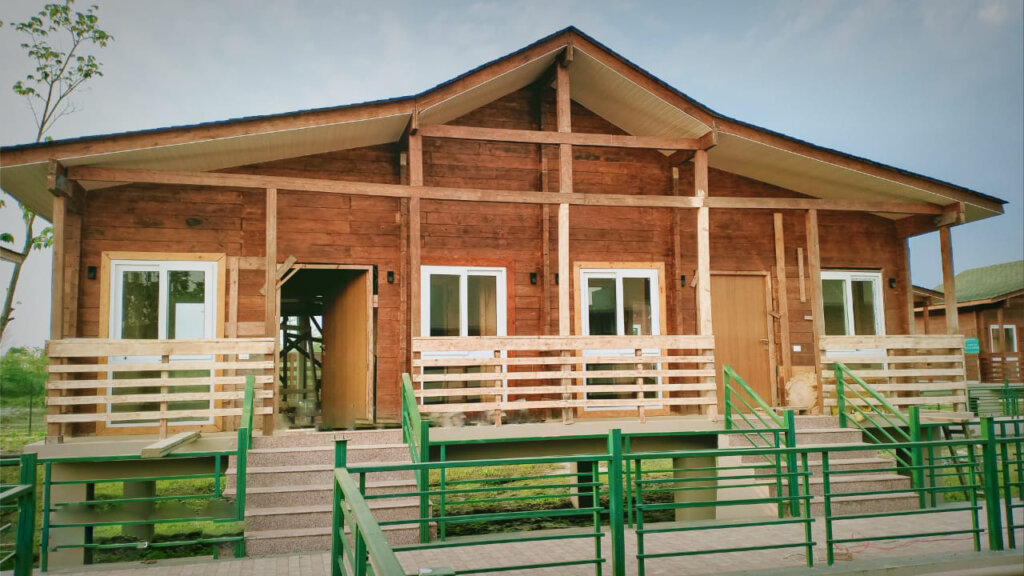
Introduction
In the vast and diverse landscape of Indian architecture, the choice of building materials plays a pivotal role in shaping not only the physical structures but also the way we interact with our environment. In recent years, there has been a growing interest in the construction of wooden homes in India. This shift represents a departure from traditional brick-and-mortar structures and signifies a deeper connection with nature and sustainable living. In this blog, we will explore the myriad reasons why wooden homes are worth considering in India in 2023.
Cultural Affinity and Traditional Wisdom
Wooden homes resonate deeply with India’s rich cultural heritage and traditional architectural wisdom. Throughout history, various regions in India have employed wood as a primary building material, showcasing intricate craftsmanship and a deep understanding of the material’s structural and aesthetic potential.
In states like Himachal Pradesh and Kerala, wooden architecture has been a staple for centuries. By embracing wooden homes, modern constructions in India can draw inspiration from this cultural affinity, fostering a sense of continuity with the past.
Sustainability and Renewable Resources
In an era where sustainability is paramount, the use of wood in home construction aligns perfectly with the principles of eco-friendly living. Wood is a renewable resource, provided responsible forestry practices are employed. The abundance of various hardwoods and softwoods in India, such as teak, saal, and pine, allows for a diverse range of options, making wooden homes an environmentally conscious choice.
Sustainable forestry practices involve replanting trees and ensuring that the rate of harvesting does not exceed the rate of natural regeneration. This approach not only safeguards the environment but also contributes to the overall health of the country’s forests. By choosing wood as a primary building material, homeowners in India actively participate in the preservation and sustainable management of the nation’s precious natural resources.
Climate Resilience and Adaptability
India’s diverse climatic conditions require homes that can adapt to varying temperatures, humidity levels, and monsoon patterns. Wooden homes, with their inherent thermal insulation properties, offer a solution to the challenges posed by the country’s climatic diversity.
Wood’s natural insulating capacity helps regulate indoor temperatures, keeping homes cool in the scorching summer heat and warm during the colder months. This adaptability is especially crucial in regions with extreme weather conditions, where the use of wood can contribute to energy efficiency by reducing reliance on artificial heating and cooling systems.
Energy Efficiency and Reduced Carbon Footprint
Wooden homes contribute to energy efficiency, playing a role in reducing the overall carbon footprint of residential buildings. Wood has a lower embodied energy compared to traditional construction materials like concrete and steel. The process of harvesting, processing, and transporting wood requires less energy, making it a more sustainable option from a life cycle perspective.
Additionally, the carbon sequestration capacity of wood is significant. Trees absorb carbon dioxide during their growth, and when wood is used in construction, this carbon is stored within the building, preventing it from being released into the atmosphere. By choosing wood for homes, residents in India actively participate in the fight against climate change, creating living spaces that are both environmentally responsible and energy-efficient.
Aesthetic Appeal and Customization
Wooden homes bring a timeless aesthetic appeal to the Indian architectural landscape. The warmth and beauty of natural wood create living spaces that feel inviting and harmonious with the surrounding environment. The versatility of wood allows for a wide range of design possibilities, from traditional to contemporary styles.
In a country with a rich history of craftsmanship, wooden homes offer the opportunity for intricate detailing and customized designs. Whether it’s the ornate carvings of Kerala’s traditional wooden houses or the sleek, modern lines of a contemporary wooden structure, the aesthetic adaptability of wood allows homeowners in India to create residences that reflect their personal style and preferences.
Health and Well-being
Wooden homes contribute to the overall health and well-being of occupants. Unlike some synthetic materials that emit volatile organic compounds (VOCs), natural wood has minimal off-gassing. This makes wooden homes a healthier living environment, particularly important for individuals with respiratory sensitivities or allergies.
The tactile and visual connection with natural wood has also been linked to reduced stress and improved mental well-being. The presence of wood in living spaces creates a sense of warmth and connection to nature, fostering a calming and comforting atmosphere.
Conclusion
As India continues to evolve and urbanize, the choice of building materials becomes increasingly critical. Wooden homes, with their cultural resonance, sustainability, and adaptability, offer a compelling alternative to traditional construction methods. In 2023, the shift towards wooden homes in India reflects not just a trend but a conscious choice to embrace a more harmonious and environmentally responsible way of living.
From the Himalayan foothills to the coastal regions, wooden homes stand as a testament to the timeless allure of natural materials in architecture. As homeowners in India weigh their options, the benefits of wooden homes—from cultural continuity to environmental stewardship—position them as a sustainable and enduring choice for those seeking a deeper connection with both their homes and the natural world. By considering wooden homes, residents in India embark on a journey that goes beyond shelter